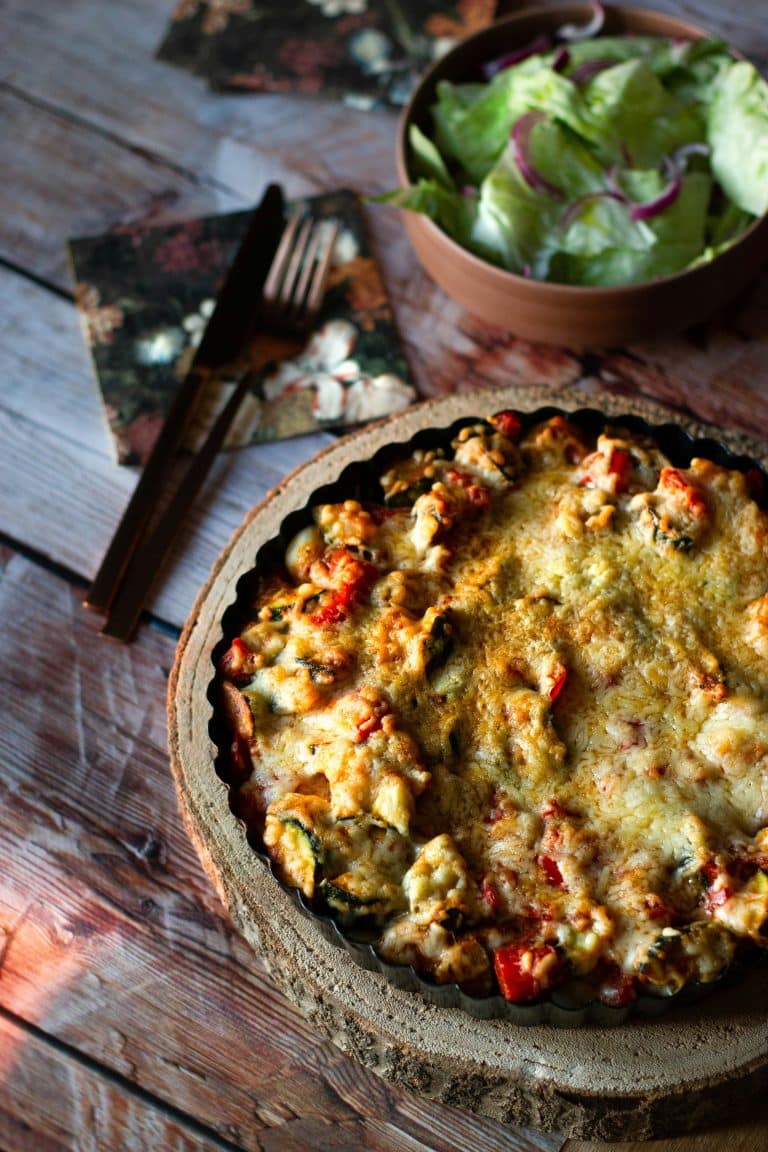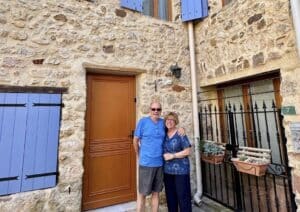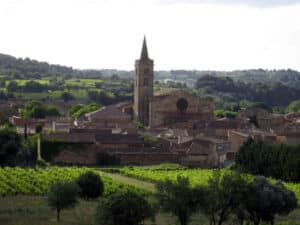Just the thought of it fresh out of the oven, paired with a thick slice of crusty
sourdough, brings a smile to my face along with memories of our year in France.

The History of Cassoulet
Cassoulet is a traditional French dish that originated in the southwestern region of
France, particularly in the towns of Toulouse, Carcassonne, and Castelnaudary. Its
history dates back to the 13th century, and it is thought to have been influenced by the
need to create a hearty, long-lasting meal for soldiers during the Hundred Years’ War.
The dish is named after the “cassole,” a deep, round earthenware pot in which it is
traditionally cooked.
Cassoulet is a slow-cooked stew made with a variety of meats, such as pork, duck, and
sausage, along with white beans, typically haricot beans. Over time, different regions
and families have put their own spin on the dish, leading to several variations. For
example, in Toulouse, the inclusion of Toulouse sausage is a key feature, while in
Castelnaudary, the focus is often on duck or goose confit.
The dish became a symbol of regional pride, and today, it remains a beloved comfort
food in French cuisine, often enjoyed during colder months or festive occasions.
Where to find the best cassoulet recipes?
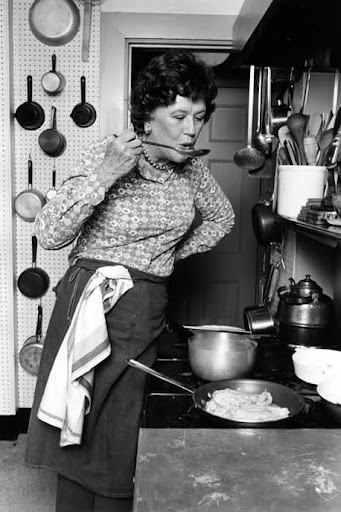
In 2025, we can easily turn to recipes from well-respected chefs like Julia Child
or to Jacques Pépin’s for his 30 minute cassoulet.
Or, for the ultimate challenge, a you can try Paula Wolfert’s three day cassoulet extravaganza *.
They say that no one has recorded a better version of this southwestern French dish, than her.
The Cooking of Southwest France, by author and cassoulet expert Paula Wolfer
A French Canadian take on classic cassoulet in Quebec
I wondered if I could find a true cassoulet in Quebec—and voilà! Bien sûr! Check out this mouthwatering description in Nuvo Magazine:
“In Quebec, the best cassoulet I have tasted comes not from Montreal or even Quebec City, but farther north, in Jonquière, where chef Daniel Pachon has become the reference for this beloved bean and meat stew. Carcassonne-born, Pachon is the owner of the Auberge Villa Pachon Restaurant, which not only serves a sublime cassoulet but also ships his specialty throughout the province.
He recalls his mother and grandmother’s versions containing all the scraps and leftovers in the refrigerator. But for the restaurant, Pachon’s cassoulet is made with pork shoulder, hock, and shank, as well as homemade Toulouse-style sausage and duck confit. As for tomato? Just a touch.
Says Pachon: “Cassoulet is a family dish, a dish of the people, and, originally, poor people. It was a nourishing dinner for peasants who worked the fields. Today, we have refined it. It’s not a luxury, yet it is wildly popular—but only when made with love. In the best cassoulets, you can always taste the passion.”
Finding the best cassoulet recipe in Capestang France
How easy it is in today’s world to do an internet search and almost instantly, find dozens of cassoulet recipes. But looking back to 2004 when we first settled in the charming town of Capestang, creating an extraordinary cassoulet recipe was not as simple as typing a few keywords into a search bar. How did we manage to come up with our own unforgettable version of this iconic dish? Here’s the story…
My husband and I moved to a charming small town in the Languedoc region of France in 2003-2004 so that our family could enjoy all the delights of slow-living in France- the vibrant markets, the language, the rich history, the culture, and, bien sûr, the incredible cuisine.

Along the way, we couldn’t resist sampling cassoulet from some of the finest market vendors, and we even made a special detour to Castelnaudary, a place renowned as the birthplace of this beloved dish, to savor its version firsthand.
If you head there, you may want to indulge yourselves at la Maison du Cassoulet.
One crisp February morning, after walking our three children to their respective schools, my husband turned to me with a smile and said, “Let’s make our own cassoulet this week.” Our favorite butcher’s shop, Boucherie de la Place, was tucked away on a quiet corner near the main square we passed every day on our way back from school. So, we popped in to gather everything we’d need for the dish.
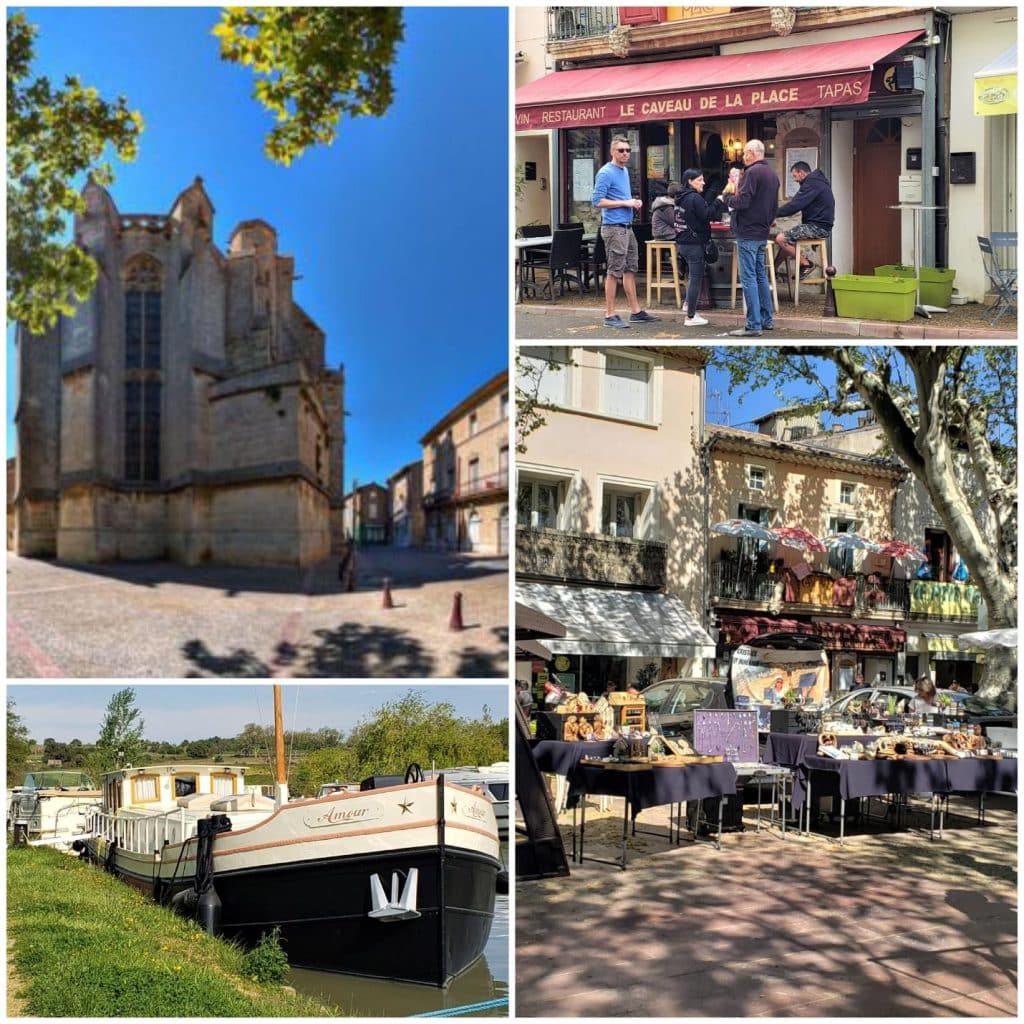
As we made our way to the front of the line, I piped up with “Bonjour monsieur” On aimerait faire un bon cassoulet”. Pouvez-vous nous aider?” Le boucher looked at us with interest and started pointing to different cuts of meat and sausage we might use. And then there was the question of what kind of beans and where to buy these. Within minutes, the patrons in line behind us enthusiastically contributed their own ideas of what ingredients we might need.
Then came the question of which beans to use and where to find them. Before we knew it, the patrons waiting behind us eagerly chimed in, sharing their own suggestions and tips for the perfect cassoulet ingredients.
A Taste of Capestang Cassoulet Recipe
While there are many variations, this dish typically combines beans, pork, duck, and sausage in a slow-cooked stew. Here’s a recipe that’s inspired by the flavors of Capestang, but keep in mind, every family has its own twist on this dish.
Ingredients:
- 500g (1 lb) dried white beans (like Tarbais or Great Northern beans)
- 4 sausages (preferably Toulouse sausage or any good-quality pork sausage)
- 4 duck legs (or confit of duck, if available)
- 250g (½ lb) pork belly or shoulder, cut into cubes
- 1 onion, chopped
- 3 cloves garlic, minced
- 2 carrots, sliced
- 2 tomatoes, chopped
- 1 bouquet garni (bay leaf, thyme, and parsley tied in a bundle)
- 4 cups (1 liter) chicken or vegetable stock
- ½ cup white wine (optional but adds richness)
- 2 tbsp duck fat or olive oil
- Salt and pepper, to taste
- Breadcrumbs (optional, for the topping)
Instructions:
- Prep the beans: Soak dried beans in water for 6 hours or overnight. Drain and rinse before using.
- Cook the beans: In a large pot, add soaked beans and cover with fresh water. Bring to a boil, then simmer for 1-1.5 hours until tender. Drain and set aside.
- Brown the meats: Heat duck fat (or olive oil) in a large pot. Brown the pork, sausages, and duck (if using fresh) on all sides, then remove and set aside.
- Prepare aromatics: In the same pot, sauté chopped onion and carrots for 5-7 minutes. Add garlic, cook for 1 minute, then add tomatoes and cook for another 5 minutes.
- Assemble the cassoulet: Preheat the oven to 160°C (320°F). Add the cooked beans, meats, bouquet garni, salt, and pepper to the pot. Pour in wine and stock, enough to just cover the beans and meats.
- Slow cook: Bring to a simmer on the stovetop, cover, and transfer to the oven. Cook for 2-3 hours, checking occasionally to ensure there’s enough liquid. Keep it simmering gently.
- Halfway through the cooking time, you can break up some of the sausages and mix them into the beans to infuse the flavors further.
7. Optional breadcrumb topping:
- If you’d like the traditional crispy topping, sprinkle breadcrumbs over the cassoulet towards the last 30 minutes of cooking. You can drizzle a little duck fat on top of the breadcrumbs to get them golden and crispy.
8. Finish and serve:
- Once the cassoulet is done, the meats should be tender, and the flavors well melded. Serve hot, ideally with a glass of local Languedoc wine!
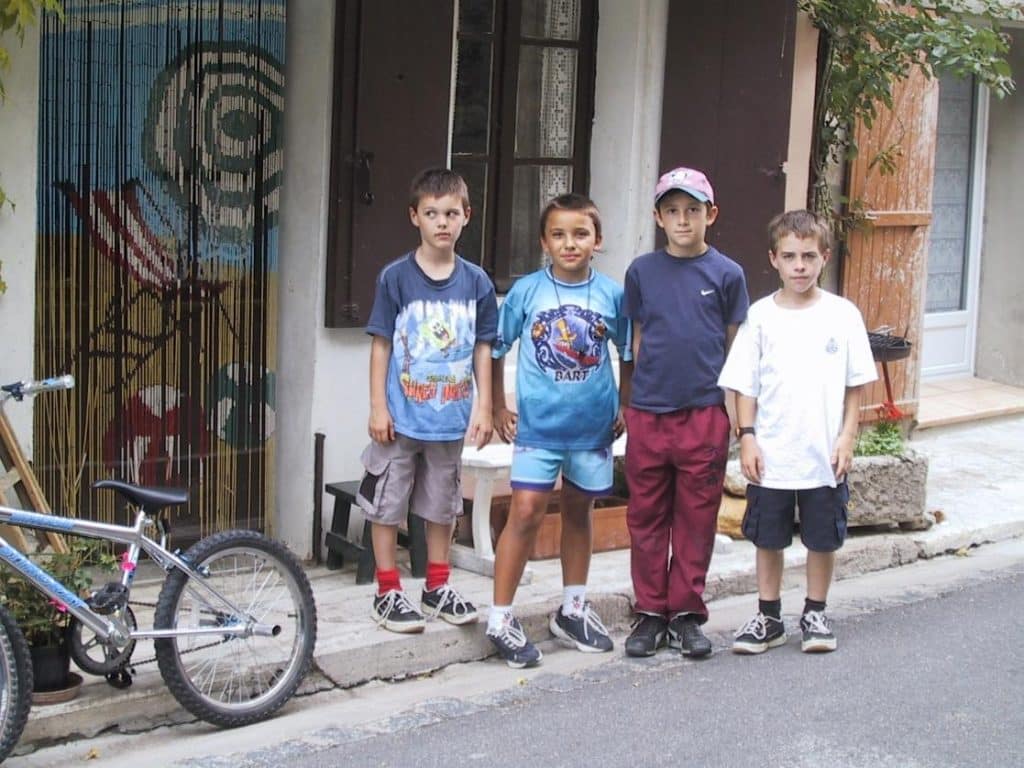
The next day, we set out on a five-minute walk toward l’École Primaire to accompany our sons, Mickey and Robbie, to their 1st and 3rd grade classrooms.
Here is a photo of our sons- Mickey, Robbie and a couple of their Capestang friends.
Passing the barren plane trees on the main square of Capestang, I realized how fortunate we were to experience everyday life in this world where parents or grandparents still walked their children to and from school each day, often along the Canal du MIdi. Where the freshest of fresh ingredients were at our doorstep in the Wednesday market. Where the American family could savor a cassoulet recipe inspired by the very flavors of Capestang, itself.
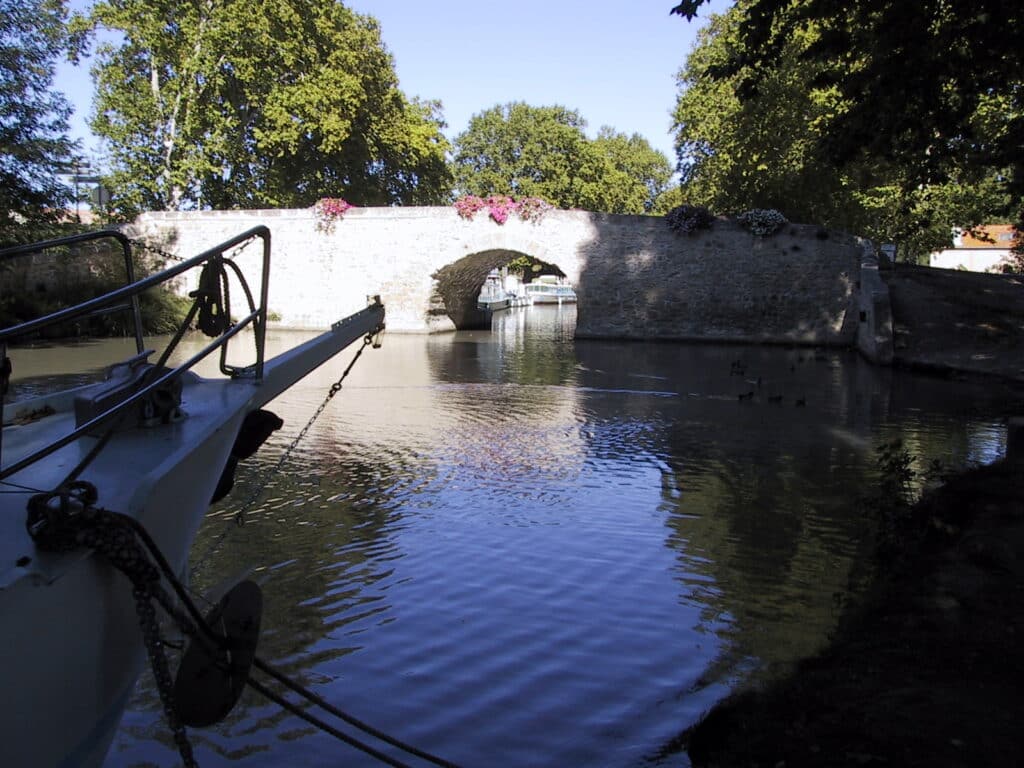
As I greeted Robbie’s teacher, Madame Robert, that morning, she said with a smile, “I hear you’ve made a wonderful cassoulet this week.’”I couldn’t help but grin and replied, “Mais oui!’ You know, sometimes it takes a village to prepare a perfect cassoulet!”
It’s times like these that drew me towards helping others experience the joys of living abroad, even if its only part-time. Start by exploring some of the best fractional ownership homes in France, where traditions like these are part of everyday living.


